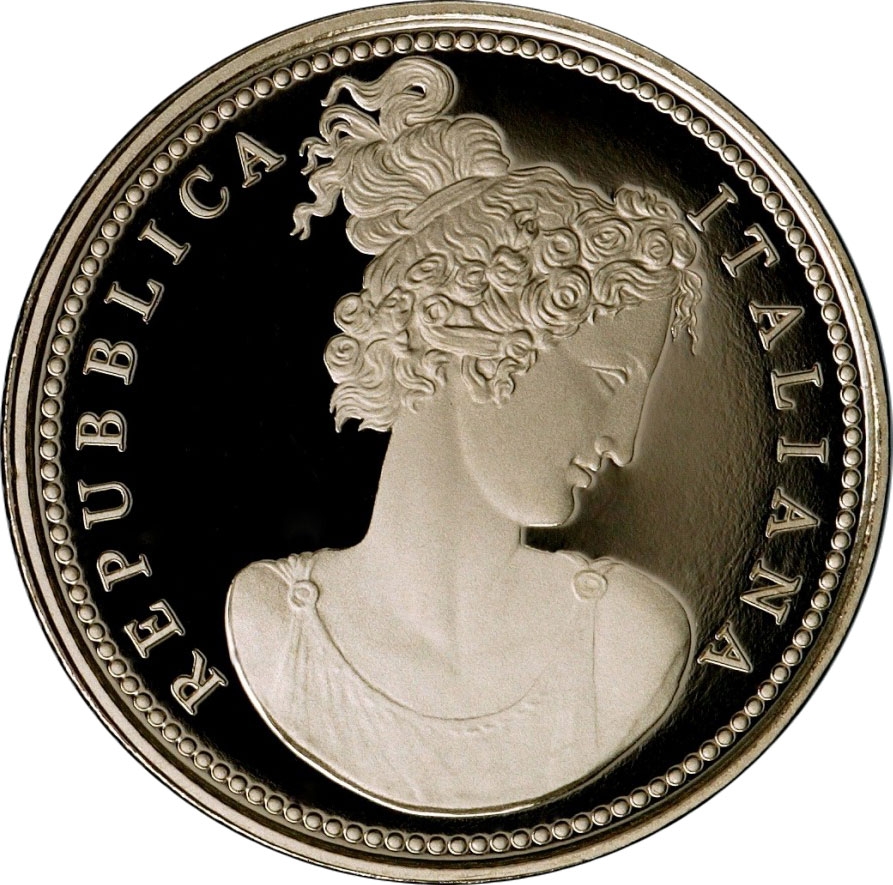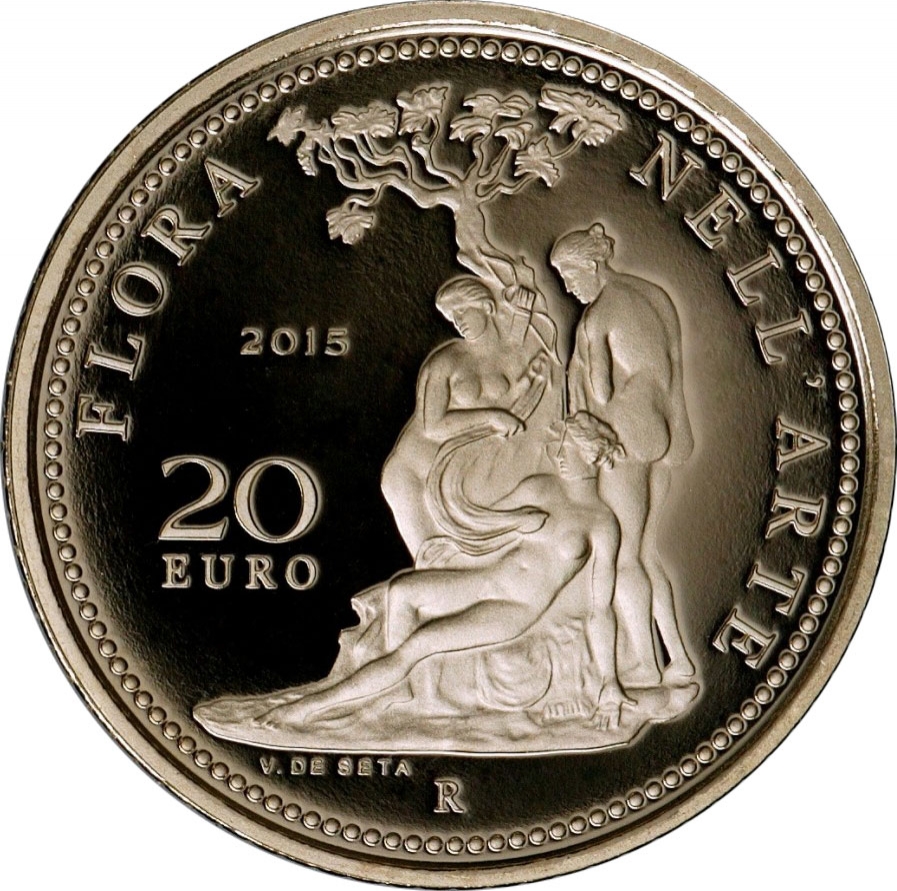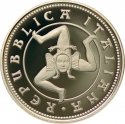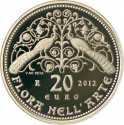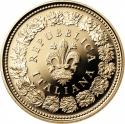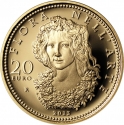You are about to finish your registration. Please check your mailbox (including spam folder). There should be a letter with a confirmation link. Check setting to make sure that your e-mail address is correct.
Send letter againDescription
In 2011 the Italian State Mint and Polygraphic Institute began a coin series entitled Flora and Fauna in Art Masterpieces. A Dual program with a €20 gold coin dedicated to flora or botanical themes, and a €50 gold coin inspired by fauna or zoological themes. The coins would illustrate and celebrate plant and animal life as portrayed in classical art through the ages.
This year the representation of animals and flowers is taken from famous works of art which focus on Neoclassicism as regards the 20 euro coin and on Rococo and Macchiaioli as far as the 50 euro coin is concerned.
Neoclassicism (also spelled Neo-classicism) was a Western cultural movement in the decorative and visual arts, literature, theatre, music, and architecture that drew inspiration from the art and culture of classical antiquity. Neoclassicism was born in Rome largely thanks to the writings of Johann Joachim Winckelmann, at the time of the rediscovery of Pompeii and Herculaneum, but its popularity spread all over Europe as a generation of European art students finished their Grand Tour and returned from Italy to their home countries with newly rediscovered Greco-Roman ideals. The main Neoclassical movement coincided with the 18th-century Age of Enlightenment, and continued into the early 19th century, laterally competing with Romanticism. In architecture, the style continued throughout the 19th, 20th and up to the 21st century.
European Neoclassicism in the visual arts began c. 1760 in opposition to the then-dominant Rococo style. Rococo architecture emphasizes grace, ornamentation and asymmetry; Neoclassical architecture is based on the principles of simplicity and symmetry, which were seen as virtues of the arts of Rome and Ancient Greece, and were more immediately drawn from 16th-century Renaissance Classicism.
Artist: Valerio De Seta
Obverse

|
Depicts a bust of Flora in front view, with light draping and right reclined head, crowned with roses. The wax model for cameo is the work of Benedetto Pistrucci (1784-1855) and preserved in the Museo della Zecca of Rome. Around the inscription is the text “REPUBBLICA ITALIANA”. REPUBBLICA ITALIANA |
|---|---|
Reverse

|
Depicts Diana bathing between two nymphs in a scene with rocks and tree. The detail is from the wax model “Diana and Actaeon” by the coin & medal sculptor Benedetto Pistrucci, and preserved in the Museo della Zecca of Rome. In the left field the year of the coin’s issue “2015” and the value “20 EURO”. On the bottom is the name of the designer “V. DE SETA” and “R”, identifying the Mint of Rome. FLORA NELL'ARTE |
| Edge |
20 Euro
Flora and Fauna in Art Masterpieces
Flora: Neoclassicism
Subscribe series
KM# 390
Flora and Fauna in Art Masterpieces
Flora: Neoclassicism
